by Dr. M | Aug 30, 2018 | Dry Eye, Education, Exam, Floaters, Medical Eye Care, News, Procedure
Dr. Moran leads continuing education session on new technology and treatments.
This past month, Moran Eye Associates held an educational event for local optometrists in the Lehigh Valley. Dr. Moran presented two lectures one on dry eye heat therapy, and the other on laser treatment for floaters. These sessions were approved by the Council on Optometric Practitioner Education (COPE) for continuing education credits for the doctors who attended.
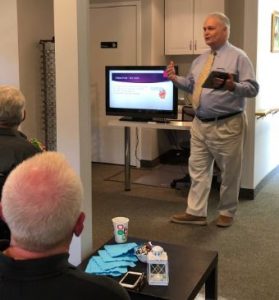
Dr. Moran Presents
During our lecture, the visiting doctors enjoyed a Summer-y spread of barbecue, salad, and snacks while listening to Dr. Moran’s lectures. Everyone in the office pitched in to make this homemade buffet. Beth made her famous barbecue (the secret is bacon!), Dr. Tang provided a chocolate fountain, Cindy brought her mom’s special recipe potato salad, Bobbi made the tossed salad, Mandy made the drinks and decorated the office for the occasion.

A Homemade Buffet Dinner
Back to the topic at hand! Dr. Moran explained the advantages and benefits of the novel treatments we offer in the office: “Dry eye treatment has become more sophisticated as the tools for analyzing tear film have developed. Now that we can image the tear film and the oil producing glands in the eye, we can more accurately diagnose the cause of dry eye. A more accurate diagnosis allows for more effective treatment.”
Heat Therapy for Dry Eye & Laser Floater Treatment now available.
Until recently, doctors had limited options to offer their patients who experienced discomfort from dry eye, or whose vision was obstructed by bothersome floaters. Moran Eye Associates has been successfully implementing these new treatment options for the past six months with great feedback from our patients!
“I feel that I had an extremely positive experience with the laser surgery on both eyes performed by Dr.Moran. I would recommend it highly.” Trudy S.
A Hands-on Opportunity
After the lecture, each optometrist had the opportunity to experience the heat therapy firsthand. They relaxed in our comfortable heat therapy room for 15-minutes, which is the same treatment that we provide our patients.
Our lids are lined with small Meibomian glands that secrete oil, which is an integral component of our tears. The oil prevents our tears from evaporating too quickly. Oftentimes, the glands become clogged, and the lack of oil flow leads to dryness, discomfort, and blurred vision. The focused heat treatment helps to improve the flow of oils. After the treatment, either Dr. Moran or Dr. Tang help to further improve oil flow by manually manipulating the glands.
After a 15-minute heat therapy treatment, they could see (and feel!) how this process improved the quality of their tear film. Dr. Dan Klinger, who practices in Schnecksville, remarked “The treatment was soothing and comfortable. I could feel the difference after just one session.”
The Science Behind Laser Floater Treatment
Dr. Moran showed a video that showed the YAG laser in action as it targeted floaters. This painless treatment uses laser energy to transform the solid floater into a gas bubble, which then dissolves on its own. Moran Eye Associates is one of a few practices in the area that offers this unique in-office treatment.
Educating patients and professionals is key to offering the best care to our patients. If you have any questions about Heat Therapy Treatment or Laser Floater Treatment , contact our office for more information or to schedule an appointment.
by Dr. M | Aug 4, 2018 | Education, Exam, Eye Protection, Eye Safety, Eyeglasses, Glasses, Low Vision, Macula, Office, Sun Damage, Sunglasses
 Cocoons Fit-Over Eyewear
Cocoons Fit-Over Eyewear

Cocoons Fit Over Your Glasses
Moran Eye Associates now offers Cocoons Eyewear, our doctors’ choice for professional-grade fitover sunglasses. Designed specifically to fit over your prescription glasses, these lightweight sunglasses come in a variety of tints, styles and sizes to fit your vision needs. Stop in our office to see for yourself!
The unique design of Cocoons isolates your eyes from the elements, keeping you free from glare, harmful UV rays, and fluctuating light conditions. These lenses and the frames work together to keep your eyes protected.

Eliminates glare for people with normal vision and low vision.
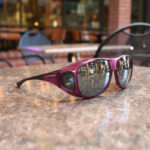
Frames come in multiple colors
These polarized glasses offer UV400 protection, scratch resistant technology, and a one-year warranty. If glare is a problem, polarized lenses provide a significant reduction in glare compared to regular tinted sunglasses. Most sunglasses sold at the store are not polarized unless specifically indicated.
Cocoons are designed to reduce glare and to enhance vision. The specialized color options were developed to target different issues. We recommend that you try on the different lens types to see what works best for you.
- Gray: for natural color definition and general daily use. Reduces light sensitivity while eliminating reflected surface glare.
- Amber: filters scattered blue light to increase contrast and provide improved depth perception in varying lights conditions. Amber is the preferred color for driving.
- Copper: filters scattered blue light and minimizes color distortion to deliver enhanced contrast and color definition
- Yellow: ideal for low light conditions. Maximizes contrast for improved definition and depth perception while eliminating glare. Best in dusk and dawn light, but not the best option for general daily use.
- Blue Mirror: maximizes glare elimination and filters additional blue light for improved contrast while delivering true color definition.
Recommended for Nighttime Driving – Twilight Lenses
Nighttime driving has unique vision issues, due to glare from headlights and reduced available light. Cocoons have developed a special Twilight lens that we recommend. These specialty Twilight lenses help to solve night driving issues because of their anti-reflective coating.
Dr. Moran explains the benefits of the Twilight lenses, “The key to better nighttime vision is anti-reflective coating. Although yellow and amber lenses help with contrast and clarity, they reduce the available light, which can make it hard to see well when you are driving. You have to balance the benefit of increased contrast with the reduction in brightness. Polarized lenses work well in the natural daylight, but don’t help with artificial lights from headlights and streetlights at night. Additionally, polarized lenses cut out 50% of light, which is counterproductive in the dark.”
The Twilight lens system blocks 100% of harmful UV light and 60% or more of harmful High Energy Visible (HEV) blue light while providing 93% overall visible light transmission. The unique filtering properties of these HEV filters effectively reduce scattered blue light and improve contrast without compromising overall light transmission. The lens system is protected by a one-year scratch resistance warranty and includes an anti-reflective coating to minimize glare and halos created by artificial light sources.
Help for patients who have heightened photophobia (light sensitivity).
Low-vision patients may benefit from a different colored tints to give them the best acuity. Sometimes, the tint correlates with specific medical conditions, but most of the time, it is a matter of personal preference. All of these lenses reduce glare and heighten contrast, which is important for low-vision patients. Additional color options include.

Cocoons Offer Color Options for Best Vision
- Boysenberry (pink): reduces glare and heightens contrast. Blocks 90% of blue light.
- Hazelnut (brown:) reduces glare and heightens contrast. Blocks 98% of blue light.
- Orange: enhances contrast by intensifying the background to improve object definition and clarity. Blocks 100% of blue light.
- Lemon (yellow): enhances contrast and visual acuity in low light conditions. Blocks 40% of blue light.
Whatever your vision needs, we can help you to see your best. We offer the latest technology to help keep your eyes healthy and to protect your vision for years to come.
Call or text us at 610-628-2022 for more information on enhancing your vision. If you’d like to schedule a visit, just click to request an appointment.
by Dr. M | Jul 25, 2018 | Cataracts, Diabetes, Dilation, Exam, Experience, Eyeglasses, Glasses, LASIK, Macula, Mark Moran, Medical Eye Care, Patient Care, Retina
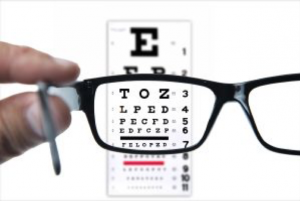
Are you Seeing your Best?
How Vision is Measured
The distance vision of a normal human eye is defined at 20/20. This number illustrates what a person with normal vision can see at twenty feet. Your visual acuity is measured on how it relates to vision at 20 feet.
- If your vision is 20/40, you can see at 20 feet, what a normal eye can see at 40 feet.
- If your vision is 20/100, you can see at 20 feet, what a normal eye can see at 100 feet.
- If your vision is 20/400, you can see at 20 feet, what a normal eye can see at 400 feet.
When you read an eye chart, chances are that person testing you is paying attention to what you say, as well as how you say it. They will know if you are seeing clearly or are struggling and making guesses. It never pays to cheat on your eye test!

Driving requirements
How well do I need to see to drive?
Although each state determines their specific requirements, generally 20/40 vision is needed to pass the driving test. If you need glasses to see 20/40, it will be indicated on your driver’s license. While your distance vision is key to passing the driving test, there are other factors that are considered as well. For complete information on what is required in Pennsylvania, click on the link.
Pennsylvania Drivers Visual Standards
After vision correction surgery, like LASIK or cataract surgery, you may be able to see well enough to have the vision correction restriction removed from your license.
What is legally blind?
If you cannot see any letters below the 20/200 line, even when wearing glasses or contacts, you are considered legally blind. If your vision can be corrected by putting on a pair of glasses, you may have poor vision, but you are not legally blind.

I see 20/20, do I need an eye exam?
Absolutely! Measuring your vision is an important part of your comprehensive exam, but there is so much more that we check at your visit. We will check your pupils, eye pressure and field of vision. We will record your visual history, health history and medications. The doctor will examine the health of your eyes using a slit lamp microscope, checking for eye disease, including glaucoma, macular degeneration, diabetic retinopathy and cataracts.
Early detection of eye disease is your best defense against vision loss. So even if you don’t need a new pair of glasses, make sure to schedule your regular check-up, so you can keep seeing your best!
by Dr. M | Jun 20, 2018 | Exam, Experience, Fun Stuff, Mark Moran
Congratulations to the winner of the June 25th
IronPigs tickets, Dennis Moyer!


Dennis and his granddaughter with their Iron Pigs tickets!
Dennis was chosen from our most recent Facebook contest. His prize was tickets to an Iron Pigs game…Clubhouse Level, 1st Row, with a preferred parking pass! Thanks to everyone who joined in by sharing and liking our Facebook page!
You will find great information about caring for your vision on the Moran Eye Associates website, Twitter and Facebook pages…and you might even win something too!

Dennis stopped by the office to pick up his tickets, and to have his picture taken with his great-granddaughter, Mackenzie.
Enjoy the game! Go PIGS!
by Dr. M | Jun 18, 2018 | Exam, Mark Moran, News
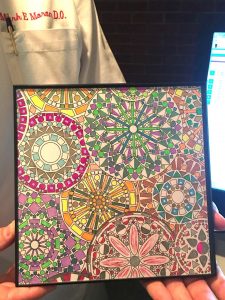
Beautiful!
 Sharing her Talent!
Sharing her Talent!
This week patient brought Dr. Moran a framed piece of art that she created. The gift was both thoughtful and appropriate. She was able to complete this intricate design with so much detail thanks to her excellent vision!
 Although the artist was camera shy, she was happy to have us share her colorful gift with others. We’ll refer to her as “The artist known as F.Z.”
Although the artist was camera shy, she was happy to have us share her colorful gift with others. We’ll refer to her as “The artist known as F.Z.”
Many thanks to her for making our office & Dr. M’s Day brighter!
by Dr. M | Jun 6, 2018 | Appointment, Contact Lenses, Exam, Glasses, Patient Care
Contact lenses are a medical device, so the first step in becoming a contact lens wearer is a complete eye exam.

At your eye exam, Dr. Tang will evaluate the health of your eye as well as determine the right correction for your best vision. Since contact lenses sit directly on your eye, it is important that you have a healthy cornea with good tear film. Your contact lenses may be a different prescription than your glasses, so we will need to determine the best prescription for you.At your exam we will also review questions about your lifestyle, to determine if contact lenses will provide you with kind of vision that you need throughout your day. There are many types, materials, and sizes are offered, and we are committed to taking the time and effort to fit your contact lenses properly. We review the type of lenses available, including daily disposables, monthly lenses, and bifocal lenses.Parents often ask, “What is the best age for children to start wearing contacts?”
Dr. Tang explains, “There is no set age at which a child can start to wear contact lenses. It all depends on each child’s responsibility level and motivation. Your child’s ability to handle contacts is directly tied to maturity level, not necessarily chronological age. As a parent, you can best evaluate your child’s responsibility level. Consider how is he or she doing with responsibilities like chores and homework? Used properly, contacts are an excellent alternative to glasses, whether part-time or full-time.”
You can give it a try!
For most prescriptions, we have trial lenses that you can try on at your appointment. The doctor will place the lens on your eye, and check the fit through the slit lamp as you blink and move your eyes. It is important that the lens fit is just right. Your contact lens should sit comfortably on the eye an be able to move when you blink so that oxygen can reach your eye.
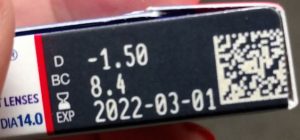
Contact lens prescription
Your contact lens prescription will indicate a lens power, base curve and diameter. These numbers will be printed on the side of your contact lens box. If your eyes have different prescriptions, it’s important that you put the right lens on the right eye…and the left lens on the left eye!
It takes practice!

We offer expert help in fitting and using contacts.
Inserting contact lenses for the first time can be challenging. Dr. Tang will sit with you and guide you through the process in our office. We have a variety of tips and techniques that make inserting lenses easy. Don’t worry, we make sure you can comfortably put your contacts IN and take them OUT safely before you go home! Be patient…practice makes perfect.
Follow up visits are important for new contact lens wearers. When you start to wear contacts, you will want to increase the amount of time you wear them gradually. We will give you a wear schedule that’s right for you, and set up a series of appointments to check that the lenses are fitting properly.
Do NOT sleep in your contacts! Extended wear has been shown to increase the risk of eye infections by 5-7 times. Eye infections can lead to serious complications including permanent vision loss.
See if contacts are right for you… Schedule an appointment!



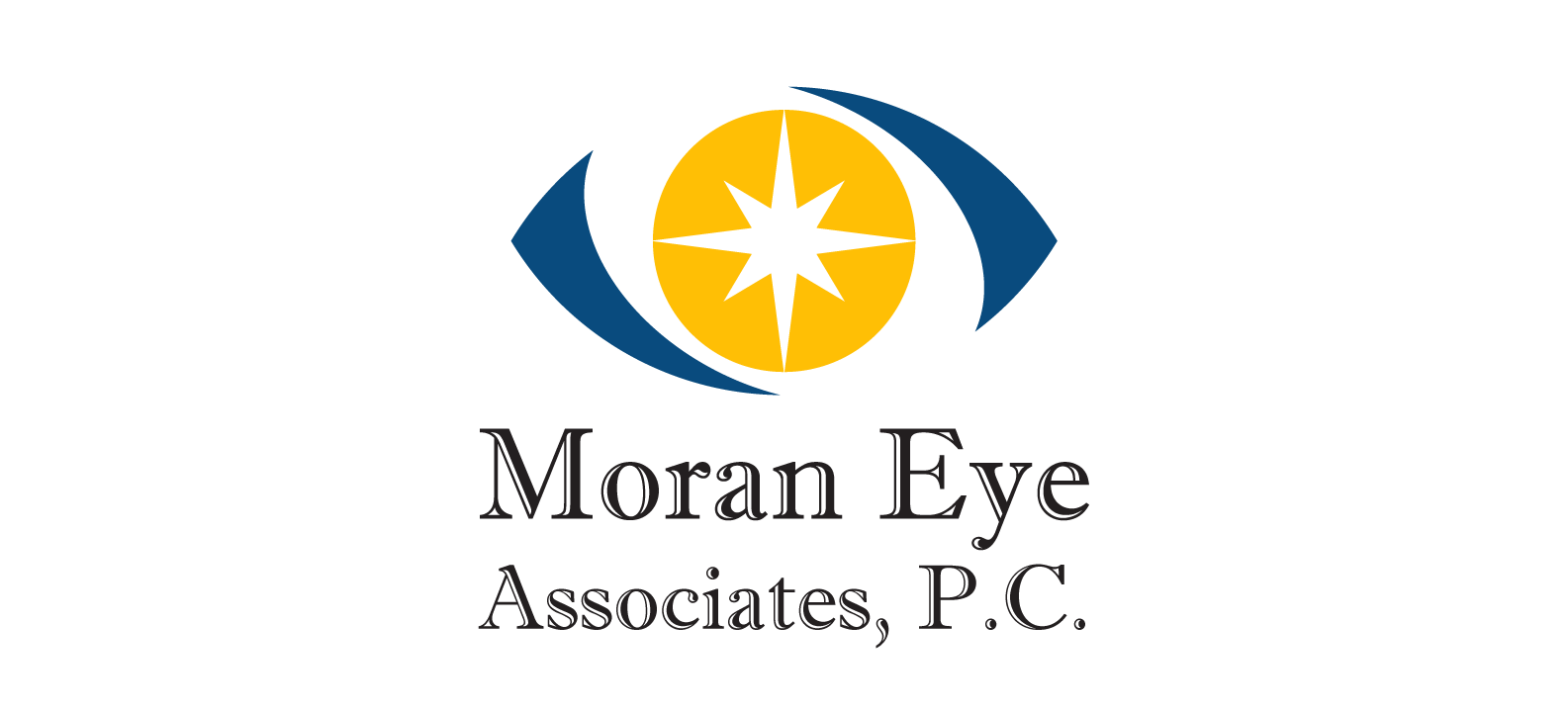













 Sharing her Talent!
Sharing her Talent! Although the artist was camera shy, she was happy to have us share her colorful gift with others. We’ll refer to her as “The artist known as F.Z.”
Although the artist was camera shy, she was happy to have us share her colorful gift with others. We’ll refer to her as “The artist known as F.Z.”

